Reading Comprehension Teaching Resources
Explore printable reading comprehension worksheets, digital activities and more to teach reading comprehension strategies in your primary classroom. Created by teachers, for teachers, the teaching resources in this collection are aligned with the Australian curriculum and have undergone a careful review by a member of our expert teaching team.
You'll find editable versions to easily differentiate your instruction for individual students, plus various options to make your lesson planning easier this school year!
New to teaching this portion of the English curriculum or just looking for fresh and engaging ways to teach reading comprehension strategies? Read on for a primer from our teacher team, including a simple definition of reading comprehension, a look at different strategies students can use and more!
What Is Reading Comprehension?
We'll start at the beginning! Reading comprehension is a skill that's hard to overestimate in terms of its importance for early years students to develop.
Defined as the ability to understand and interpret written language, reading comprehension involves the process of decoding text, extracting meaning from it, and then integrating that meaning with prior knowledge and understanding.
Not only does comprehension comprise the ability to recognise and understand individual words, but it also involves the ability to recognise patterns and relationships within sentences and paragraphs, as well as the ability to make inferences and draw conclusions based on the information presented.
This isn't just important for reading, of course.
Comprehension is all about making meaning, and it includes various levels of understanding, including:
- Literal
- Inferential
- Evaluative
- Critical
If you think about it, we rely on these skills on a daily basis — when we notice the stooped shoulders of a partner as they walk in the door or when we listen to the weather report and observe how heavily laden the sky is with grey clouds.
To develop those same skills in a reading context, our students need to build a variety of language skills, such as vocabulary knowledge, grammar and syntax, as well as cognitive processes, such as attention, memory and critical thinking.
So how do they get there? Let's talk strategies!
What Are Reading Comprehension Strategies?
As you well know, students don't start off being able to comprehend every single thing they read. But teaching them strategies to understand better and retain information will allow them to go from recognising individual words to understanding a range of texts.
Some common reading comprehension strategies include:
- Previewing — This is the process of skimming the text before reading it in detail to get an overall sense of what it is about.
- Activating Prior Knowledge — Students can draw on existing knowledge and experience to help them understand new information, such as a new text.
- Making Connections — This strategy focuses on teaching students to make connections between a text and their own experiences and understandings. Research into the science of reading has shown enhanced comprehension when students are able to connect new information to information they already know.
- Questioning — In this comprehension strategy, students ask and answer questions to clarify the meaning of the text and deepen their understanding. When you centre questioning activities around the familiar open-ended prompts of who, what, when, where, how, why, and which, students assert their understanding and identify any gaps in their comprehension of the text. Questions can be posed by a teacher, by their peers, or by the students themselves.
- Visualising — Visualisation provides both teachers and students with another means to extend their exploration of a text and deepen understanding. This reading comprehension strategy asks students to create and describe an image in their mind, centered around a place, situation, or character in the text. Visualising has been proven in research to improve student recall! Using the five senses is a great way to scaffold student comprehension through visualising.
- Summarising — Summarising is a reading comprehension strategy that asks students to reflect on the text and communicate their understanding of it. A well-formed summary is made up of the main idea of the text and the key details that support the main idea, showing that the student has understood what they’ve read well enough to write a summary that’s not merely a repetition of the text.
- When summarising, students may complete one or more of the following:
- Recount the text in their own words
- Identify the main idea, topic or purpose
- List key words or phrases
- Identify structural elements of the genre
- Using the SWBST process can help students with this reading comprehension strategy. The steps in the SWBST process are:
- Somebody
- Wanted
- But
- So
- Then
- When summarising, students may complete one or more of the following:
- Inferring — The process of drawing conclusions based on clues or evidence presented in the text is called inferring, and it involves readers using what they know and pairing it with what they read in the text to make a conclusion. You may also call this 'reading between lines!'
- Monitoring Comprehension — When monitoring comprehension, students reflect on and assess their understanding as they progress through the text. In this metacognitive process, students may ask themselves questions like 'Is this making sense?' or 'Do I need to read this again?'
- Some comprehension strategies that may be effective may include going back to reread a section of a text, slowing down or speeding up your reading rate, and using text features to help understand difficult parts of a passage. All of these are active reading strategies that students can do to help them better understand what they are reading, while they are reading!
- While monitoring asks students to identify hurdles and barriers, students also benefit from connecting this reading comprehension strategy with explicit strategies to help them pass their hurdles.
All of these comprehension strategies can be taught and practised explicitly.
- Plus Plan

Christmas Around the World - Year 3 Reading Comprehension
Discover how Christmas is celebrated in the northern and southern hemispheres with printable reading comprehension sheets for Year 3.
- Plus Plan
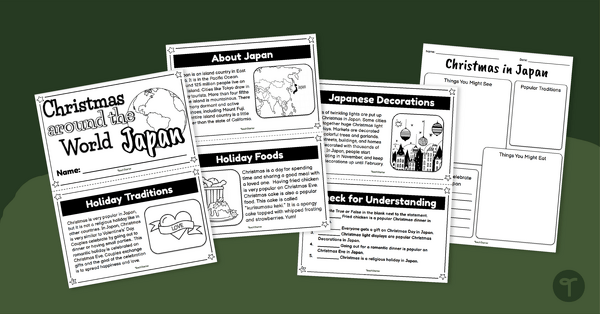
Christmas in Japan - Holidays Around the World Mini Book
Introduce your students to Japanese Christmas traditions and decorations with a printable Christmas in Japan Mini Book.
- Plus Plan
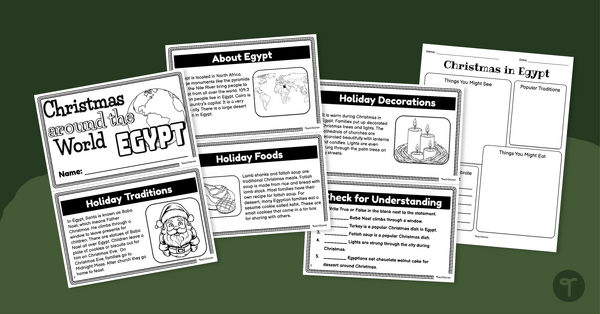
Christmas in Egypt – Celebrations Around the World Mini Book
Introduce your students to Egyptian Christmas traditions with a printable Christmas in Egypt Mini Book.
- Plus Plan
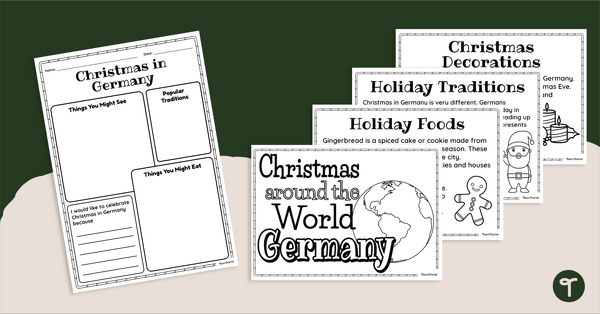
Christmas Around the World Mini Book - Germany
Introduce your students to Germany's Christmas traditions and decorations with a printable Christmas Around the World Mini Book.
- Plus Plan
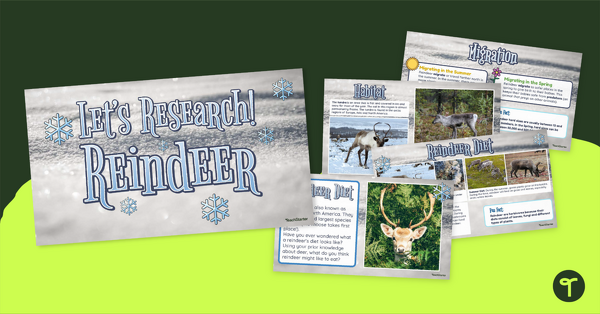
Let's Research! Reindeer Facts for Kids PowerPoint
Use this instructional Google Slide or PowerPoint to guide your students through a reindeer research project!
- Plus Plan
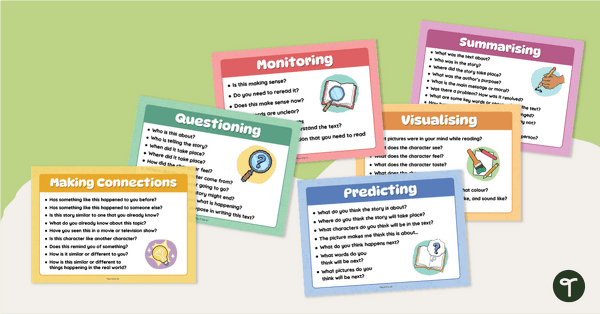
Reading Comprehension Question Stems - Super Six Reading Strategies
Enhance instruction on the six reading comprehension strategies with our printable Reading Comprehension Question Stems Chart Pack.
- Plus Plan
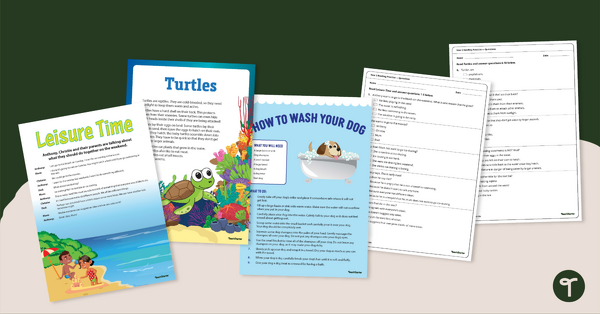
NAPLAN Reading Magazine – Year 3
5 reading texts with multiple choice questions for NAPLAN Reading Year 3.
- Plus Plan

Science of Reading Group Folder Templates
Stay organised with these versatile Science of Reading Group Folder Templates, designed to offer plenty of options.
- Plus Plan
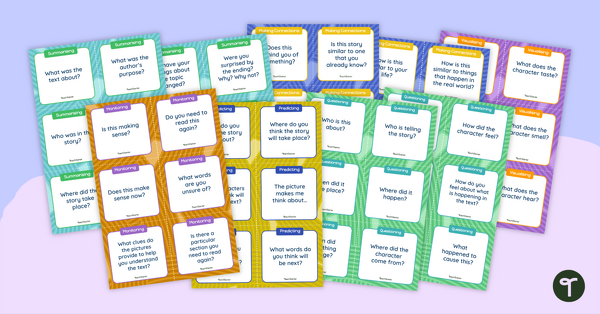
Super Six Reading Comprehension Question Cards
Help students with six different comprehension skills with this set of super 6 comprehension task cards and mats.
- Plus Plan
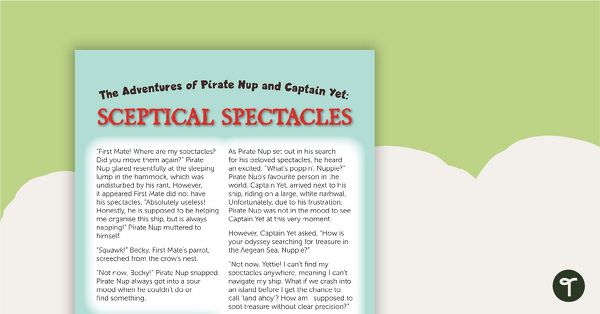
Adapt a Short Story – Change the Complication
Explore the role the complication of a story plays within narrative structure with this engaging and fully scaffolded writing project booklet.
- Plus Plan
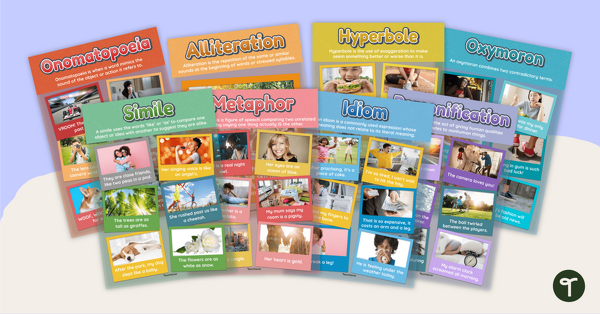
Figurative Language Poster Pack
Remind your students about the most common types of figurative language with this set of classroom display posters.
- Plus Plan

Baby Animals Reading Worksheets - Year 1-2
Learn about animals and their babies with a pack of printable Animal Babies Reading Worksheets for Years 1 & 2.
- Plus Plan
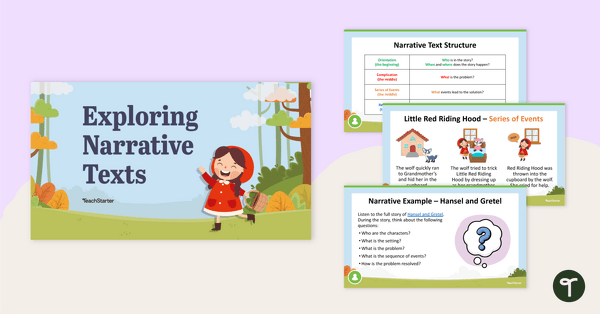
Exploring Narrative Texts PowerPoint
Teach your students about the key elements of narrative texts with this comprehensive teaching presentation.
- Free Plan
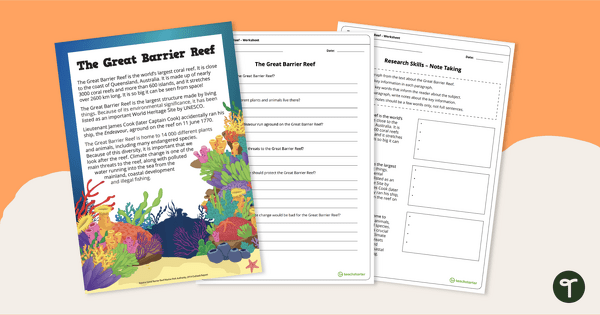
Great Barrier Reef Comprehension and Note Taking Worksheet
Learn about The Great Barrier Reef with a reading comprehension and note-taking activity.
- Plus Plan
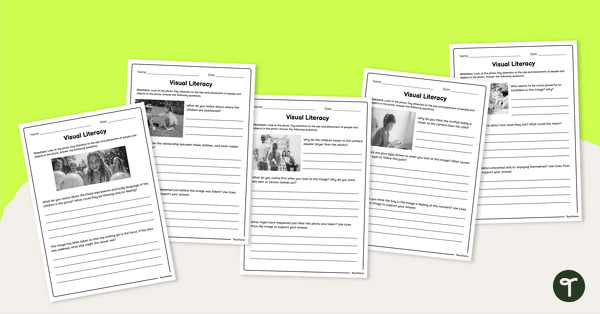
Visual Literacy Worksheets
Enhance critical thinking with visual literacy worksheets that guide students to analyse images, infer meaning and explore how pictures tell powerful stories.
- Plus Plan

Penguin Adaptations - Year 3 Reading Comprehension
Explore the fascinating world of penguins and their adaptations with our set of printable Year 3 Reading Comprehension worksheets.
- Plus Plan
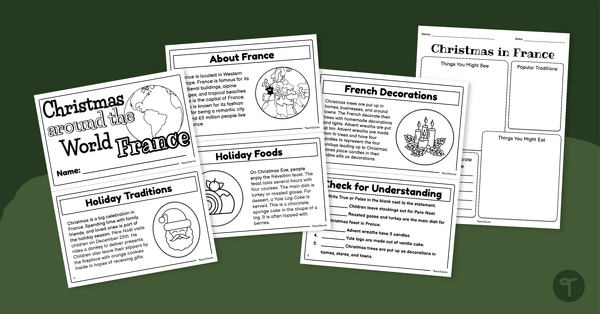
Christmas in France - Mini Book for Kids
Introduce your students to Christmas traditions in France with a printable Christmas Around the World Mini Book.
- Free Plan
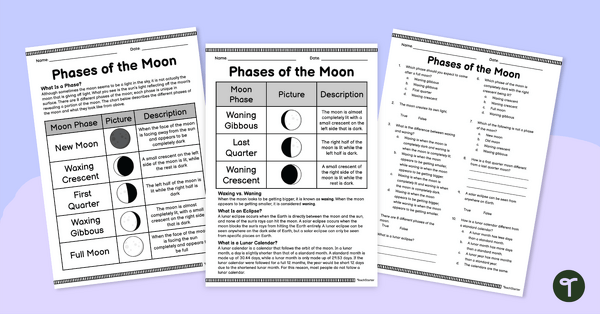
Phases of the Moon – Comprehension Worksheet
Analyse different moon phases and how their visual appearances change over time with this reading comprehension worksheet.
- Plus Plan
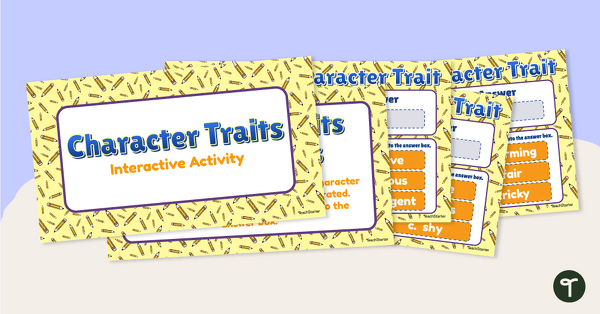
Identifying Character Traits Interactive Activity
Get your students identifying character traits with this engaging digital quiz that helps students understand how language reveals personality in writing.
- Plus Plan

Novel Study Worksheet Pack
Download this set of novel study worksheets that can be used with any text to support your students in exploring characters and events in literature.
- Plus Plan
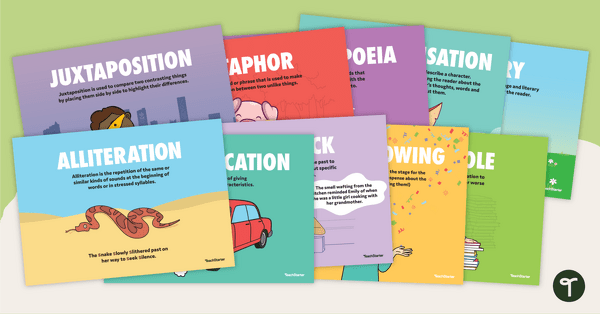
Literary Devices Poster Pack
Explore the various literary devices used by authors with the set of colourful classroom posters.
- Free Plan
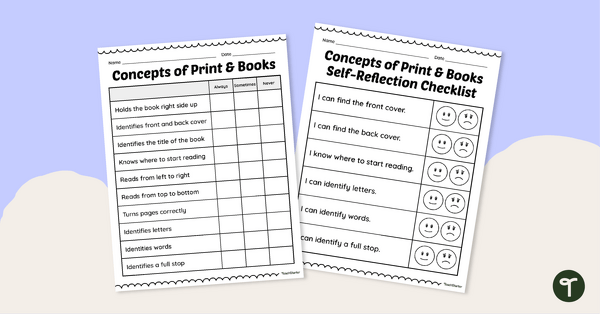
Concepts About Print Assessment Checklists
Use these concepts of print assessment checklists to check all aspects of print are understood.
- Plus Plan
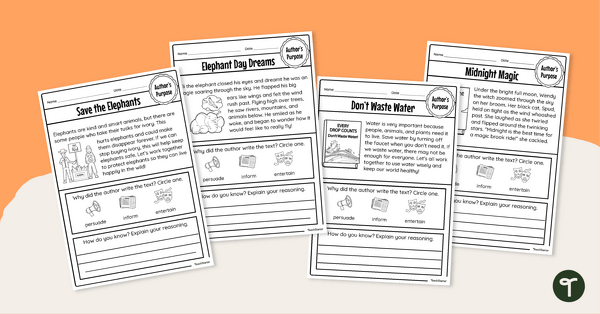
Author’s Purpose Reading Passages Worksheet Set
Explore the Author's Purpose in these reading passages with this set of Author's Purpose worksheets.
- Free Plan
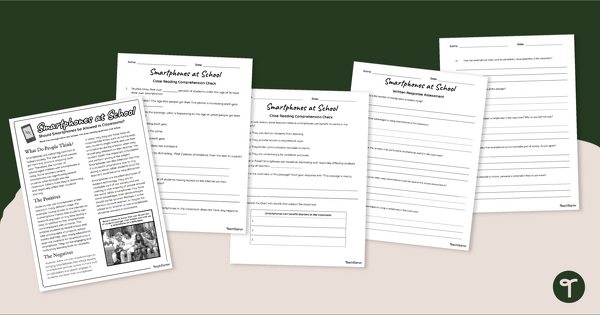
Comprehension - Should Smart Phones Be Allowed in Classrooms?
Decide if cellphones should be allowed in class and boost comprehension skills with a reading passage and comprehension test.
- Plus Plan
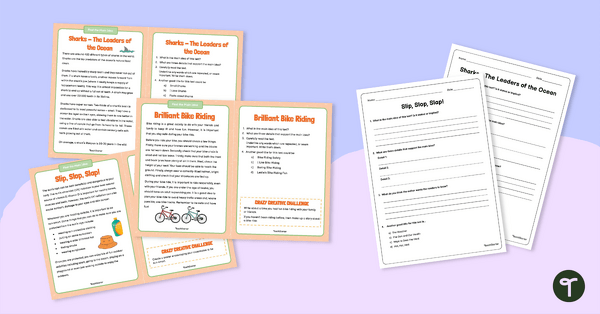
Comprehension Task Cards - Finding The Main Idea
A set of comprehension task cards to help students find the main idea when reading.
- Free Plan

Story Map Graphic Organiser Pack
Download and use a printable Story Map Graphic Organiser to help your students make sense of story elements related to their reading.
- Free Plan
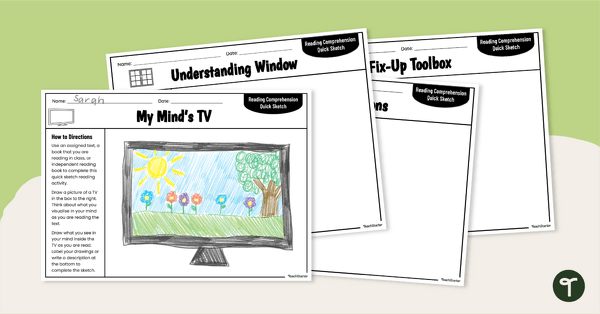
Reading Monitoring Comprehension Activity Pack
Explore easy ways to monitor comprehension with this quick draw activity pack perfect for primary students.
- Free Plan
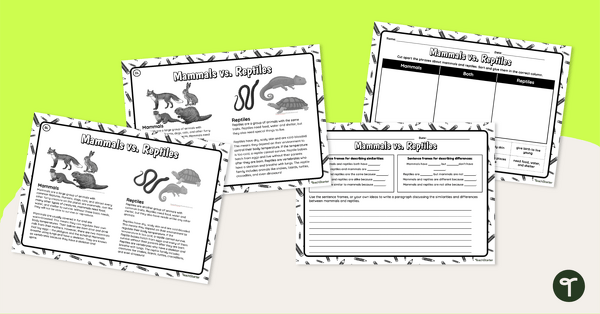
Paired Passage Worksheets-Mammals vs. Reptiles
Compare mammals vs. reptiles and add to your reading instruction with leveled nonfiction, compare and contrast passages, and worksheets.
- Plus Plan
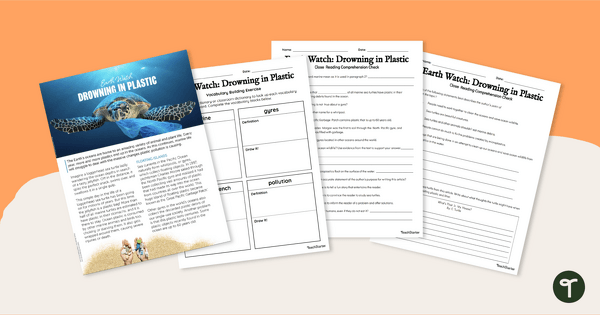
Drowning in Plastic – Reading Comprehension Worksheet
Teach your students facts about ocean pollution with this comprehensive article with accompanying comprehension activities.
- Plus Plan
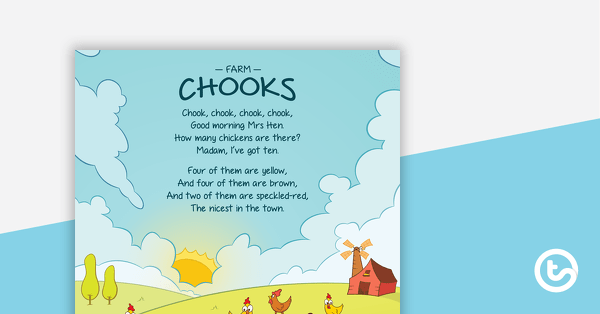
Chook, Chook, Chook, Chook - Number Rhyme and Worksheet
A 1 - 10 number rhyme and accompanying worksheet.
- Free Plan

Symbols and Signs Environment Poster Pack
Help your students recognise the world around them with this engaging Symbols and Signs in the Environment Poster Pack!
- Plus Plan

Picture Story Sequencing Worksheets
Help your students build strong visual literacy skills with these Picture Story Sequencing cut and paste worksheet pack.
- Reading Comprehension Worksheets
- Reading Comprehension Templates
- Reading Comprehension Posters
- Reading Comprehension Teaching Presentations
- Reading Comprehension Games
- Reading Comprehension Flashcards
- Reading Comprehension for Foundation Year
- Reading Comprehension for Year 1
- Reading Comprehension for Year 2
- Reading Comprehension for Year 3
- Reading Comprehension for Year 4
- Reading Comprehension for Year 5
- Reading Comprehension for Year 6
- Reading Comprehension for Year 7